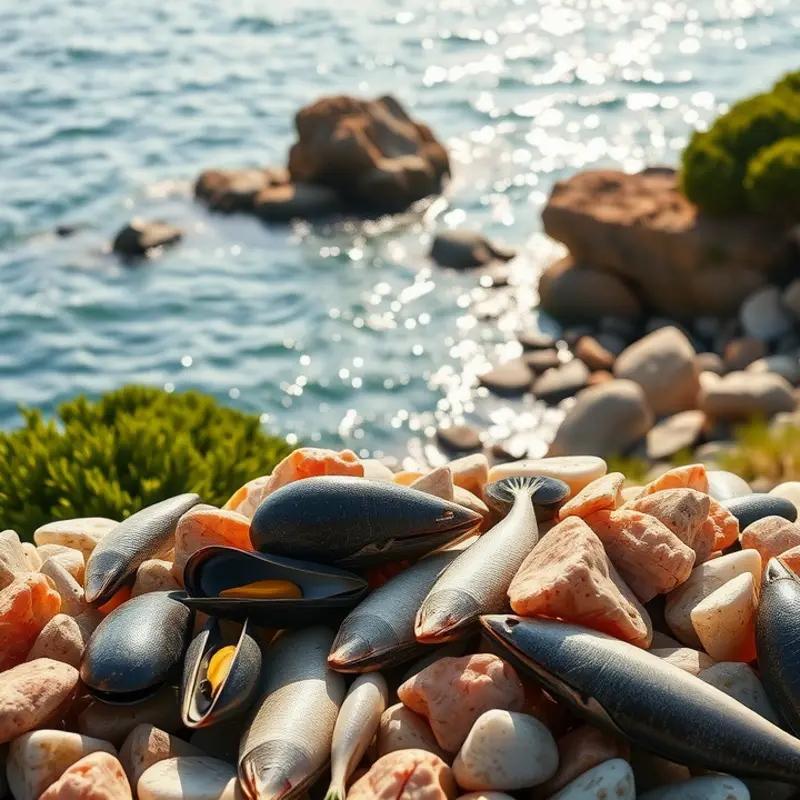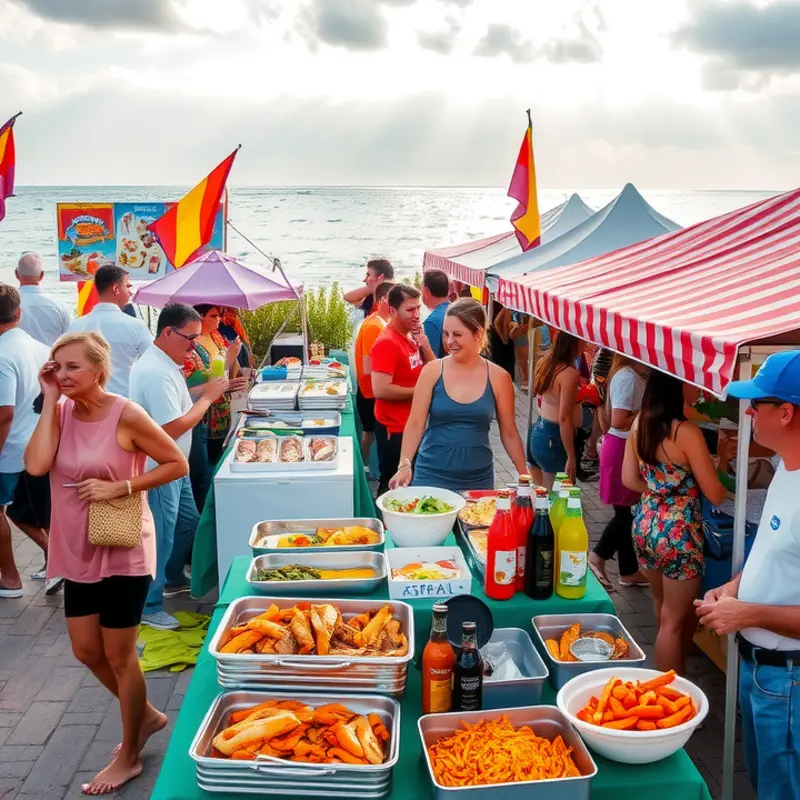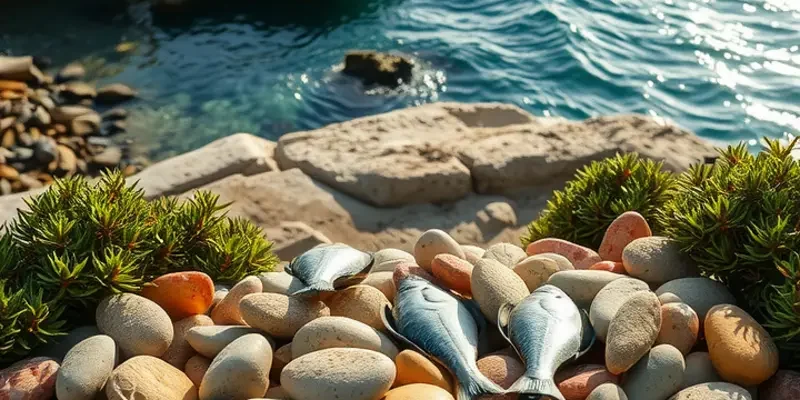Coastal communities around the globe boast diverse culinary traditions shaped by their relationship with the sea. From the fresh catch of the day to age-old cooking methods, maritime cultures create flavors that transport us to distant shores. This journey will explore the rich tapestries of flavors woven through the lives of seafaring people, celebrating their unique contributions to global cuisine.
The Bounty of the Ocean: Fresh Ingredients and Traditional Preparation

The ocean’s vast expanse is a treasure trove of culinary delights that coastal communities have cherished for generations. From the icy waters of the North Atlantic to the warm currents of the Indian Ocean, a rich variety of seafood plays a pivotal role in these cultures. Its abundance and freshness form the foundation of traditional dishes that celebrate the sea’s vibrant flavors.
Coastal kitchens are often filled with the aroma of seafood sizzling on an open grill. Grilling is a favored method among seafaring communities, offering a direct, unadulterated taste of the ocean’s bounty. Fish, crustaceans, and mollusks are seasoned with local herbs, such as dill and fennel in Northern Europe or lemongrass and kaffir lime in Southeast Asia. These enhance the natural flavors, allowing the seafood to shine.
Smoking is another ancient technique revered for its ability to preserve and imbue seafood with rich, smoky complexity. In Scandinavia, salmon is traditionally smoked over juniper wood, imparting an earthy fragrance. Similarly, the indigenous peoples of the Pacific Northwest smoke salmon as a form of cultural expression, using alderwood to create a distinctive profile.
Meanwhile, curing with salt and other seasonings is a global practice that highlights both ingenuity and resourcefulness. The Mediterranean, with its sun-drenched shores, is renowned for its salted fish, a staple for preserving catches during the hot summer months. In Portugal and Italy, bacalhau (salt cod) and bottarga (cured fish roe) are iconic examples, showcasing how preservation techniques also elevate taste and texture.
The bounty of the ocean is not complete without the delicate balance of spices and marinades. Coastal Indian dishes, such as Goan fish curry, benefit from the combination of tangy tamarind and fiery chilies. This fusion creates depth and heat that complements the softness of the fish. Similarly, Caribbean islands use a melange of allspice, thyme, and scotch bonnet peppers for their seafood stews, imparting a warmth reflective of the tropical climate.
These traditional practices not only honor the flavors of the sea but also embody a commitment to sustainability. Many coastal communities adhere to time-honored fishing methods, ensuring a thriving relationship with their aquatic environment. For these cultures, sustainability is not a modern concept but a necessity rooted in respect for nature’s rhythm. Understanding sustainable practices in food storage and preparation further embraces this ethos, ensuring that the traditions continue to thrive in harmony with the sea.
In exploring the bounty of the ocean, it’s clear that coastal cultures possess a profound appreciation for their natural resources. Whether through smoking, curing, or seasoning, these communities continue to preserve their heritage and, importantly, share the delicious tastes of the sea’s treasures with the world.
Culinary Traditions and Festivals Celebrating Maritime Heritage

Coastal communities worldwide have a profound connection to the sea, reflected in their culinary traditions and festivals. These celebrations are vibrant expressions of cultural identity, showcasing local seafood and age-old rituals.
In Portugal, the Festa de São Bartolomeu is a spectacle of color and flavor. Taking place in the picturesque town of São Bartolomeu do Mar, this festival dates back centuries and is deeply rooted in maritime tradition. Families gather to enjoy grilled sardines and other seafood freshly caught from the Atlantic. The festival is not just about food; it’s a time of storytelling and folklore, where tales of the sea are shared, preserving the local heritage and honoring the power of the ocean.
Across the globe in Japan, seafood festivals are a testament to both ancient and modern traditions. The Kushiro Shitsugen Seafood Festival, held in Hokkaido, is a culinary paradise for seafood lovers. Here, visitors indulge in local specialties such as saury fish, scallops, and king crab, cooked using techniques passed down through generations. These festivals are more than gastronomic gatherings; they are a celebration of the changing seasons and the bounty they bring. Participants partake in communal cooking experiences, reinforcing social bonds and respect for nature’s cycles.
The Mediterranean, with its azure waters, also hosts numerous festivals celebrating maritime flavors. In Spain, the Feria del Pescado Frito in Andalusia is revered for its variety of fried fish dishes. This festival celebrates the Mediterranean’s abundant offerings and emphasizes simple yet delightful cooking techniques. By savoring each bite, participants engage in mindful eating, steeped in a tradition that values quality over complexity. For more on enhancing flavor without overcomplication, consider these flavor boosters without salt.
In South America, Peru’s Semana del Chilcano festival celebrates the sea’s contribution to the national spirit, Pisco. Although primarily a drink festival, it highlights the symbiotic relationship between culinary traditions and local ingredients, showcasing seafood that complements Pisco’s crisp taste. Coastal communities honor their connection to the sea through ceviche, prepared with an array of fresh catches available during the event. The flavors are a testament to Peru’s rich biodiversity and culinary ingenuity.
These festivals highlight the ocean’s integral role not only as a provider but as a central character in community life. Through food, music, and storytelling, maritime festivals foster cultural continuity and environmental awareness. They inspire participants to appreciate the ocean’s beauty and bounty, reinforcing sustainable practices for future generations. As we delve deeper into maritime culinary treasures, understanding these traditions enriches our appreciation of the sea’s enduring influence on human culture.
Final words
The culinary traditions of maritime cultures reflect a deep connection to the ocean, showcasing the diversity and richness of flavors inspired by the sea. These unique foods and preparation methods not only nourish but also tell stories of heritage, community, and the natural world. As you explore these maritime dishes, consider how they connect us to different cultures, inviting us to appreciate the beauty of food in its many forms. The flavors of the ocean are not just sustenance; they are a testament to our shared humanity.








